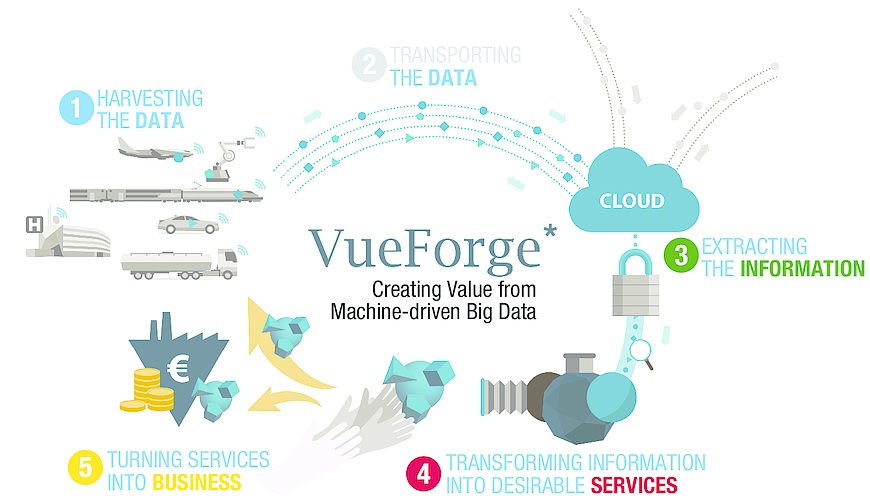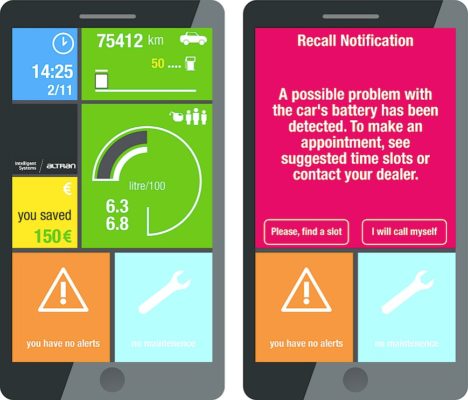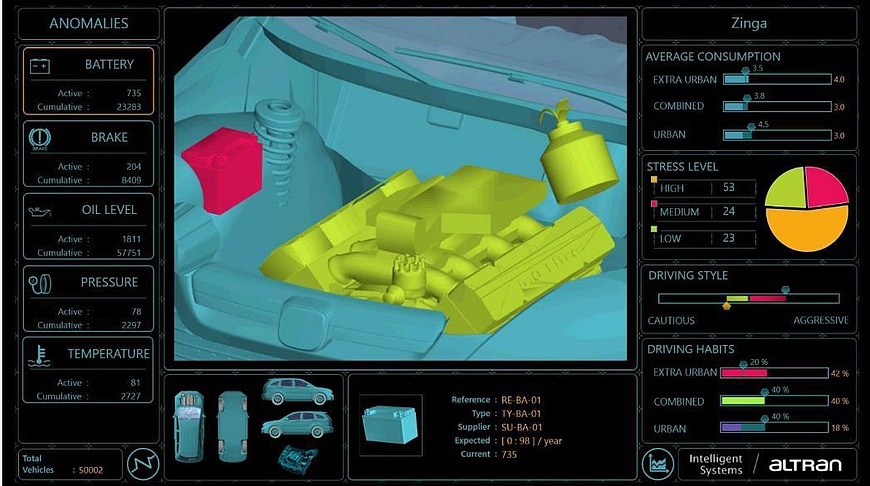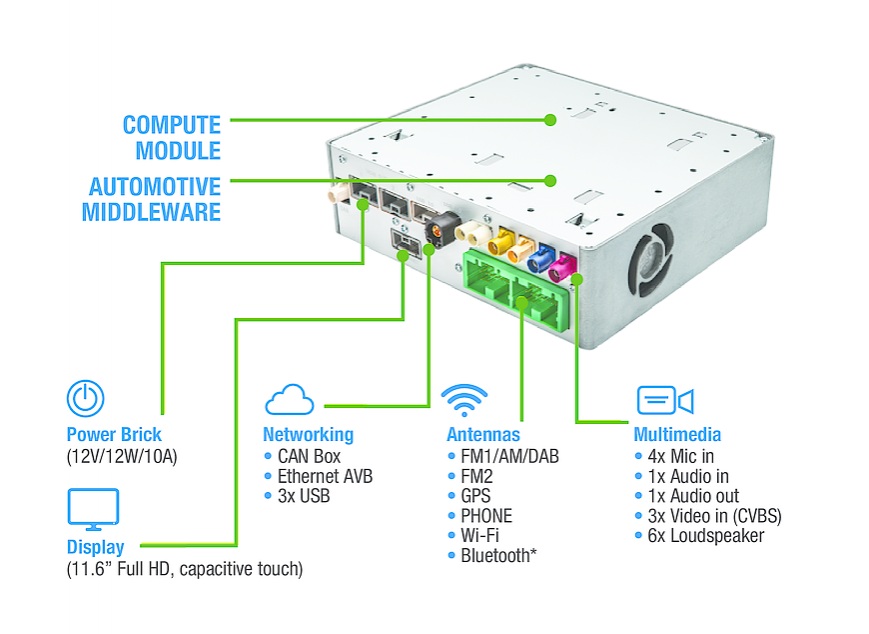Fill form to unlock content
Error - something went wrong!
Submit the information below to access the paper.
Thank you!
A Superhighway to Connected Car Value
Automakers around the world are enhancing vehicle operation and customer experiences with a dizzying array of technologies ranging from driver-assistance systems to touchscreen infotainment systems with high-resolution displays and incredible sound. This increasing vehicle complexity, however, escalates development costs and malfunction risks, as well as the potential for expensive recalls.
To better manage these fleets of complex vehicles, automakers need a way to enable wireless monitoring of vehicles through the Internet of Things (IoT). Using Big Data analytics on the collected data, they could then identify anomalies, quickly alert drivers of potentially faulty components, and enable predictive maintenance systems that increase reliability ratings and help drivers avoid breakdowns. Far-sighted automakers also could study daily usage patterns to uncover opportunities for operational improvements and new features and services.
This article looks at the enormous benefits automakers and drivers gain by connecting vehicles to the IoT for data extraction. We consider a solution that addresses the challenges of harvesting data throughout a product’s life and continuously converting it into useful insights. We describe how this solution works with leading cloud solutions like Microsoft Azure to enable predictive analysis using machine learning. And we look at how Intel® In-Vehicle Solutions provides a hardened, automotive-grade, application-ready hardware platform with the compute performance and connectivity to enable onboard data analysis for reduced cloud costs.
The Big Data Opportunity for Automakers
The exponential growth of in-vehicle connected devices is driving automaker interest in the collection, transport, storage, and analysis of their diverse data. An IHS Automotive study estimates that 152 million actively connected cars will be on the road by 2020, generating 30 terabytes (TBs) of data each day at about 350 MB per second (MBps). This is 23 times more data than the 15 MBps generated in 2013. Not included are the comparable volumes of data generated by instrumented test vehicles during product development before a single car is sold.
This mountain of data offers insight into the vehicles (diagnostics, wear, maintenance, defects) and their drivers (location, usage patterns, driving history). The IHS Automotive study estimates the potential value from Big Data assets in the connected car at $14.5 billion USD or more by 2020. Such figures will remain academic, however, unless the data can be exploited to achieve real business goals.
To balance the sheer volume and cost of collecting and managing the data against the potential value, automakers need Big Data strategies. They need mechanisms for realizing value from data early (close to the collection point) and for adjusting data collection strategies throughout the vehicle lifecycle.
A Solution from within the Industry
A global integrator in many sectors, Altran has been active in the automotive industry for over 30 years and is a long-standing partner of leading original equipment manufacturers (OEMs) and Tier 1 and 2 automotive suppliers. To address IoT challenges and opportunities in the field, the company is introducing its VueForge* portfolio of products and managed services.
VueForge integrates technology, usage, and business models within machine-driven Big Data by combining in-depth domain knowledge with in-house accelerators, turnkey services, and a supporting ecosystem. The solution provides insights on new cost, time, and quality optimization opportunities across a wide range of industries.
VueForge addresses five stages in the continuous cycle of transforming machine data into value (Figure 1). Each stage must comply with industry security and privacy regulations as it performs one of these roles:
- Connecting sensors and machines with solutions like Intel® IoT Gateway Technology and Intel In-Vehicle Solutions
- Establishing a transport network for sending data to infrastructure, such as a cloud
- Implementing turnkey analytics, data visualization, and business intelligence tools
- Delivering product and services innovation and ideation based on business intelligence from these tools
- Supporting business model innovation based on the collected intelligence

Figure 1. VueForge provides solutions for all five stages required for a continuous cycle of harvesting Big Data and turning it into valuable insight, services, and business.
Much of VueForge’s value comes from its four in-house accelerators. These accelerators and their functions include:
- VueForge Sense, which provides an extremely low-power-consuming, software-based sensing technology for turning commodity microcontroller platforms and smartphones into powerful sensors.
- VueForge Think, which extracts valuable information from data and presents it in easily understood forms.
- VueForge Play, which aids rapid prototyping by providing a lightweight cloud-based IoT platform.
- VueForge Innovate, which offers a design-thinking approach for creating new services and business models.
VueForge in Action
Elements of the VueForge product portfolio are already field-proven for advanced data collection and services in vehicles. Most recently, Altran and Microsoft explored a range of new application possibilities for car manufacturers and car owners based on vehicle usage data. The demonstration used VueForge components and an open-and-connected car platform consisting of an enhanced infotainment unit with an Intel® processor.
The base platform – connected to the car’s CAN bus – provided two levels of information. First, it gave drivers access to a vehicle-specific application through cloud-enabled smartphone services. The smartphone application displayed vehicle status and alerts, advisory information, and key performance indicators such as real-time fuel consumption and estimated total cost of ownership (TCO) against other drivers of the same make and model (Figure 2). The solution based these TCO estimates on driver history and vehicle repair data and prices for standard service actions at approved dealers. Fuel pricing estimates were a statistical estimate.

Figure 2. Drivers’ smartphones provide access to an application displaying vehicle information.
The platform’s second level of information – delivered to automakers and fleet operators – illustrated the value of statistical data on an entire population of their vehicles (Figure 3). A massively parallel cloud-based simulation generated a 500,000-vehicle data set to demonstrate scaling data collection and analysis. Using such a tool, automakers could track component health and faults, driving environments, and driving styles.

Figure 3. Automakers can view aggregated usage, advisory information, and key performance indicators.
The demonstration also uncovered additional benefits. By enabling a connection between the vehicle and the driver, the smartphone application provided automakers with a valuable tool for managing customer relationships. They could easily issue alerts and recall notifications for massive savings in customer notification, as well as an increase in customer satisfaction.
Seeking to explore variations in driver behavior, Altran and Microsoft extended this open-and-connected car platform with Microsoft Azure cloud services. Machine learning algorithms classified driver fuel consumption by demographic characteristics, building a predictive model for forecasting fleet-level or regional fuel consumption. When combined with forecasted fuel cost variations, the model could advise on cost-optimized individual refueling schedules. This predictive element strengthens the connection between automaker and driver. Collecting data on additional parameters allows automakers to offer service specials, new car rebates, and other timely communications based on a car owner’s actual vehicle use.
Handling Big Data
A key insight from this demonstration was the technical trade-off required between the richness of the sensor suite and the cost and feasibility of processing the resulting volumes of data in the cloud. The early objective to “capture everything” was soon scaled back in consideration of the data volumes generated by a 1 Mbps CAN bus on each of 500,000 vehicles.
Network bandwidth and cloud costs will affect the volume of information automakers collect and analyze in the cloud. They can, however, balance the cost of data transfer and storage against the cost of providing local processing and intelligence. Strategies for reducing the communication cost include aggregating several sensor values into a composite measure and reporting some parameters only when they deviate from a specified range. Also, increasing the sophistication of the in-vehicle data processing can help reduce lifetime data management costs.
Intel® In-Vehicle Solutions under the Hood
A more advanced vehicle platform than the demonstration platform is the Intel In-Vehicle Solutions development kit. This platform provides the compute power to handle VueForge, in-vehicle infotainment (IVI) systems, and on-board sensors (including radar and vision-based sensors). It also enables local analytics and data compression to ensure overall success of the end-to-end system.
Based on the Intel® Atom™ processor E3800 product family, the Intel In-Vehicle Solutions’ compute module delivers integrated, highly efficient, and dedicated image signal processing, as well as outstanding compute, graphics, and media performance with a processor operating within a 5-10 W thermal design power (TDP). The module also includes a power management solution and the Intel® Ethernet Controller I210-IS, which supports IEEE 802.1Qav audio-video bridging (AVB) for tightly controlled media-stream synchronization, buffering, and reservation.
Intel’s hardened, automotive-grade, application-ready platform comes with all the necessary hardware, middleware, and software stacks for Linux*, Microsoft Windows*, and Android* operating systems (Figure 4). A uniquely comprehensive, pre-integrated set of automotive middleware comprises core features such as automotive boot times, power management, persistency, connectivity, graphics, and audio/video functions.

Figure 4. This diagram of an Intel® In-Vehicle Solutions development kit shows its comprehensive built-in connectivity and I/O.
To facilitate the development of custom solutions, the Intel-supplied middleware is flexible and extensible, providing a well-defined API for adding other compatible functions and applications from various ecosystems. IVI system developers can easily incorporate new applications and additional middleware.
Because security is a major concern for connected car owners, the Intel Atom processor E3800 family includes a built-in Secure Boot feature that helps prevent malware infiltrations by allowing only trusted software to run on the platform. To ensure reliability, the processor includes hardware-assisted virtualization and support for error-correcting code (ECC) memory and an industrial temperature range (-40 °C to 110 °C).
The Intel In-Vehicle Solutions module includes a board support package (BSP) and fully validated I/O and graphics drivers optimized for Intel Atom processors. Along with reducing development time for connected car projects, the module enables software compatibility with next-generation Intel Atom processors, thereby encouraging and supporting new feature and services development.
The Road Ahead
Running VueForge on the Intel In-Vehicle Solutions provides an end-to-end solution that can help automakers reap the benefits of the IoT by extracting real value from massive amounts of vehicle data. Automakers can use the combined solutions’ data collection and analysis capabilities to gain insight into how to continuously improve customer experiences and product quality, develop more competitive feature sets, and reduce exposure to costly recalls by catching issues in their infancy.